Hiking survival tips – Los Angeles Times
Editor’s note: The Wild is all about featuring a variety of exciting voices from SoCal’s outdoors scene. For the last several weeks, we’ve featured a series of guest writers (whom we’ve dubbed “wilders” ) from around The Times who are eager to share their adventures with you. This week’s guest wilder is one of The Times’ L.A. County government reporters, Jaclyn Cosgrove. On weekdays, Jaclyn can often be found observing a public meeting or investigating the mental health system. But when the weekend comes, they hit the trails with their trusty 11-year-old hiking companion, Maggie May (a dog who thinks she’s a human), often in search of a trail no one else is on.
I grew up in the country. As a kid, I had more dogs and goats to play with than neighborhood children. When friends came over to our ranch in rural Oklahoma, I would teach them how to jump from row to row on the round bales of hay in our pasture. My dad used to say that we didn’t go camping because we were already in the woods.
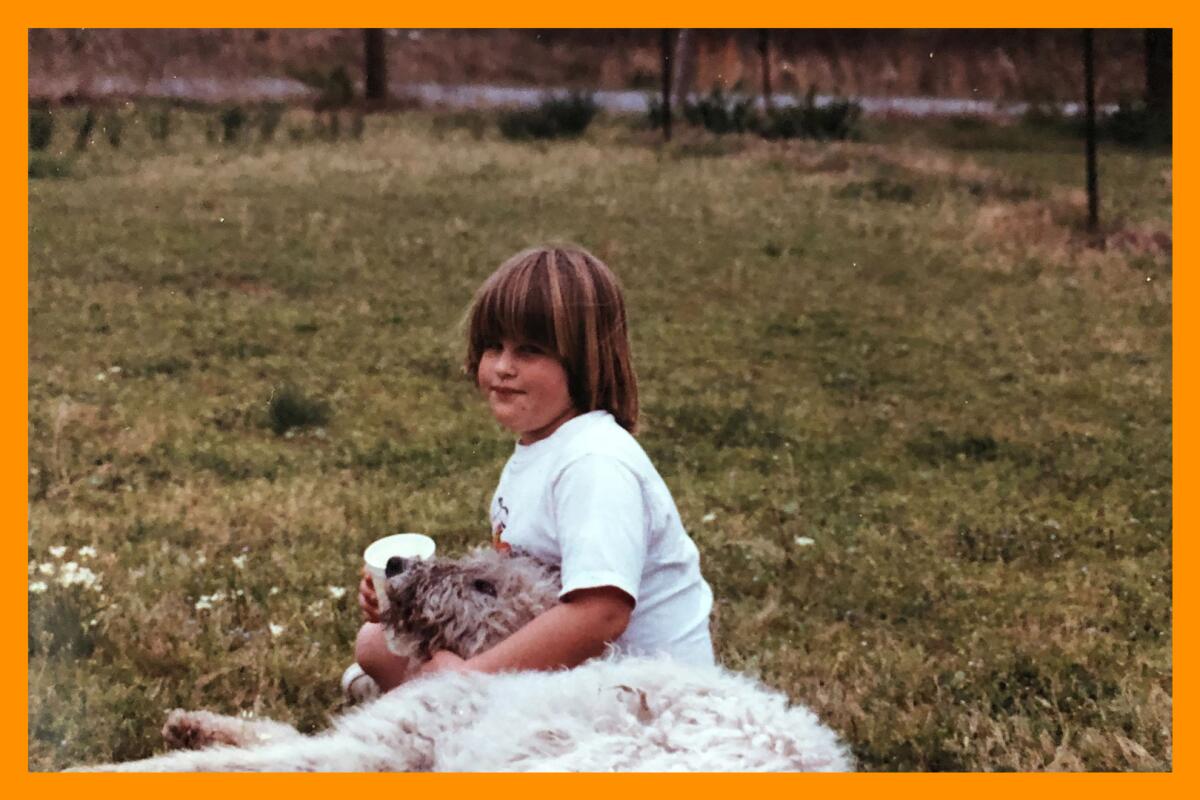
This week’s guest wilder sits in a field in rural Oklahoma with their arm around a canine companion.
(Photo from Jaclyn Cosgrove)
I learned country people skills, like wrapping a wound with whatever you had, whether it be a Band-Aid or duct tape and paper towels. We didn’t have 911 service. So, when my dad ran himself over with a tractor — a story for another Wild — my mom hauled ass in our pickup truck to the nearest hospital, usually a 20-minute drive, to get him care. (He was fine.)
Newsletter
Get The Wild newsletter.
The essential weekly guide to enjoying the outdoors in Southern California. Insider tips on the best of our beaches, trails, parks, deserts, forests and mountains.
You may occasionally receive promotional content from the Los Angeles Times.
I did not grow up hiking trails or building campfires. Those skills came later in life, when my mother and I started attending adult outdoor education events aimed at teaching us skills we’d like to have, like kayaking, fly-fishing and archery. Our first time at Women in the Outdoors in Tenkiller State Park, we famously failed for hours to put up our tent, until it was late and dark. We were saved by the event hosts, who put up our tent for us in about three minutes. (We later took a class and learned our mistakes — and how to build a campfire.)
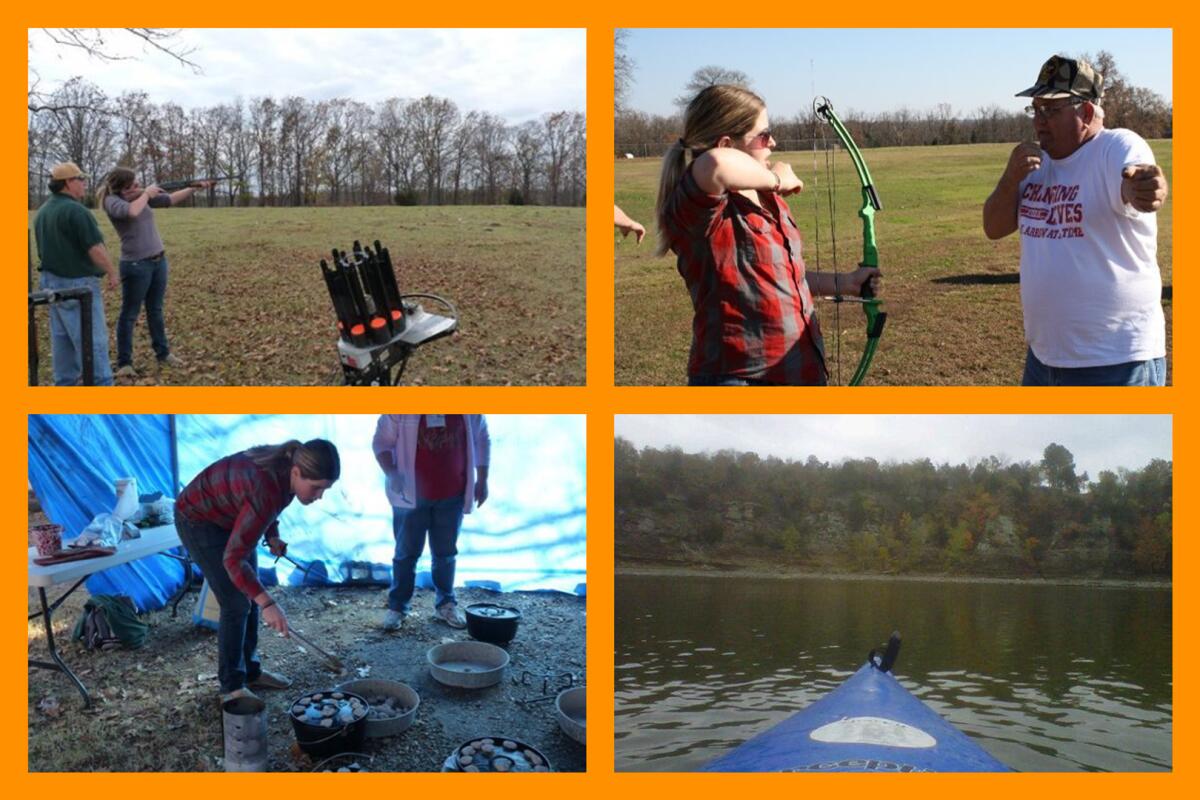
The author, in their 20s, honing their outdoor skills as part of the Women in the Outdoors program at Tenkiller State Park in Oklahoma.
(Photos from Jaclyn Cosgrove)
When my wife and I moved from Oklahoma City to Los Angeles in 2017, I yearned to be in nature. I hadn’t realized how important the woods were to me until I was without them. We lived in Koreatown, the most densely populated neighborhood in Los Angeles, where the only nearby green space was private land. I soon turned to the mountains. And oh, the mistakes this country kid made.
There was the time I was hiking in old running shoes in Fryman Canyon Park and looked down to peel a clementine. I felt my feet move in opposite directions along the sandy Southern California soil. I slipped, overextending my right hamstring. With no first aid kit, I was forced to MacGyver my dog’s leash as a brace around my knee, and use the handle to lift my leg as I walked. That day I learned California dirt is not the same as Oklahoma dirt — and the importance of hiking boots.
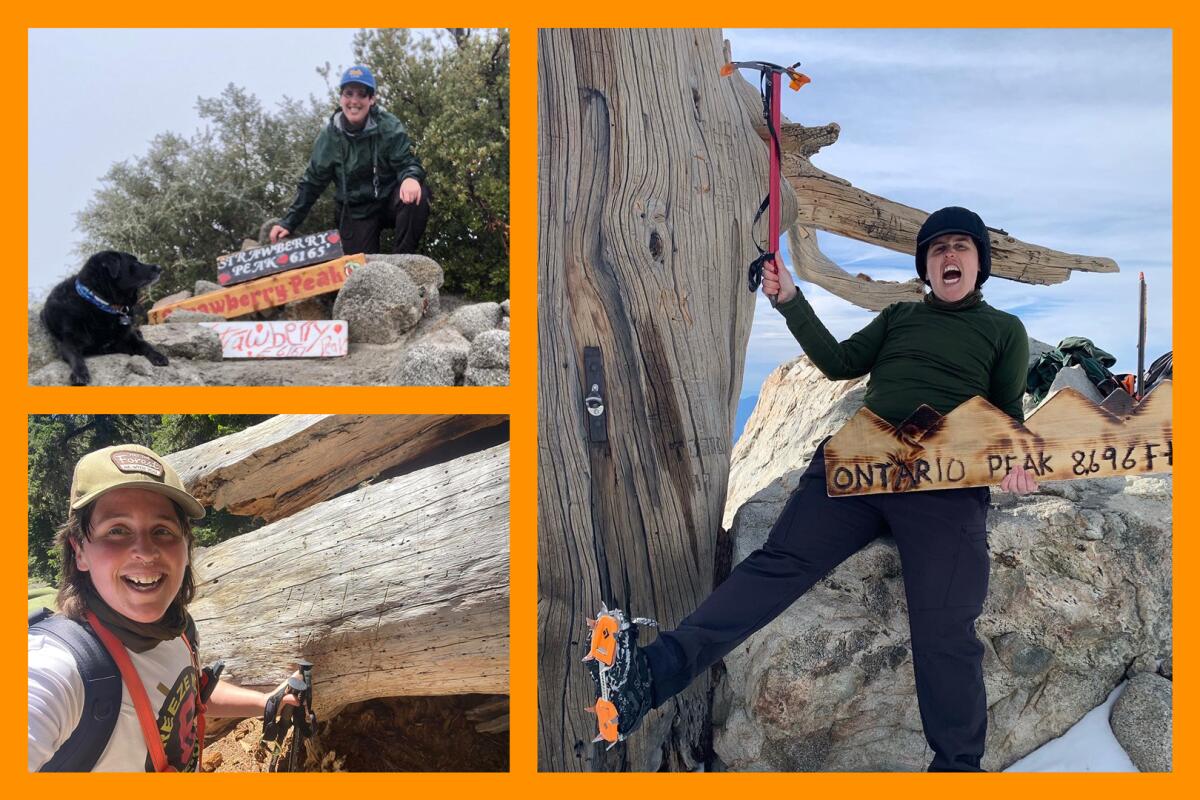
Photographic evidence of the author totally not dying while hiking in the wilderness during a hike to Strawberry Peak (top left), Mt. Baden-Powell (bottom left) and Ontario Peak (at right).
(Photos from Jaclyn Cosgrove)
And then there was the time my dog, Maggie May, and I got overheated on Strawberry Peak. Out of water, I carried her off that mountain (yes, I still feel terrible, don’t @ me). Or the time it was crisp and cool in Los Angeles, but because of an inversion layer, the temperature on Mt. Wilson was hotter than below, and we got overheated again. That time, I had a special backpack to carry her, and stopped much sooner.
Over the last six years of living in Los Angeles, I have learned valuable lessons about how to stay safe on day hikes, whether I’m solo hiking or with friends.
Part of my learning has come from Googling. One of the first things that pops up when you research outdoor and hiking preparedness are articles like this one from outdoor-supply company REI explaining the need for the “10 essentials”: navigation, a headlamp, sun protection, first aid, a knife, fire, shelter, extra food, extra water and extra clothes.
But as Jessie Krebs, a former U.S. Air Force SERE (Survival, Evasion, Resistance and Escape) specialist told me in a recent interview, the 10 essentials is an imperfect concept.
For one, that list doesn’t include carrying anything for signaling, which helps rescuers find you, Krebs said. In survival, your number one priority is “[to] get out of there,” Krebs said. Even so, many 10-essentials lists treat signaling as an afterthought, she said.
In her courses, Krebs instead teaches the five basic needs for survival, which once learned, can be used to plan what you need to take with you on a day hike.
No. 1: Signaling options. “As soon as you’ve decided it’s a survival situation, signaling is your number one priority,” Krebs said. “You want to help search and rescue find you.”
Many people don’t realize how hard it is for the search and rescue folks to see us from their helicopters — especially if you’re wearing green, black or any earth tones.
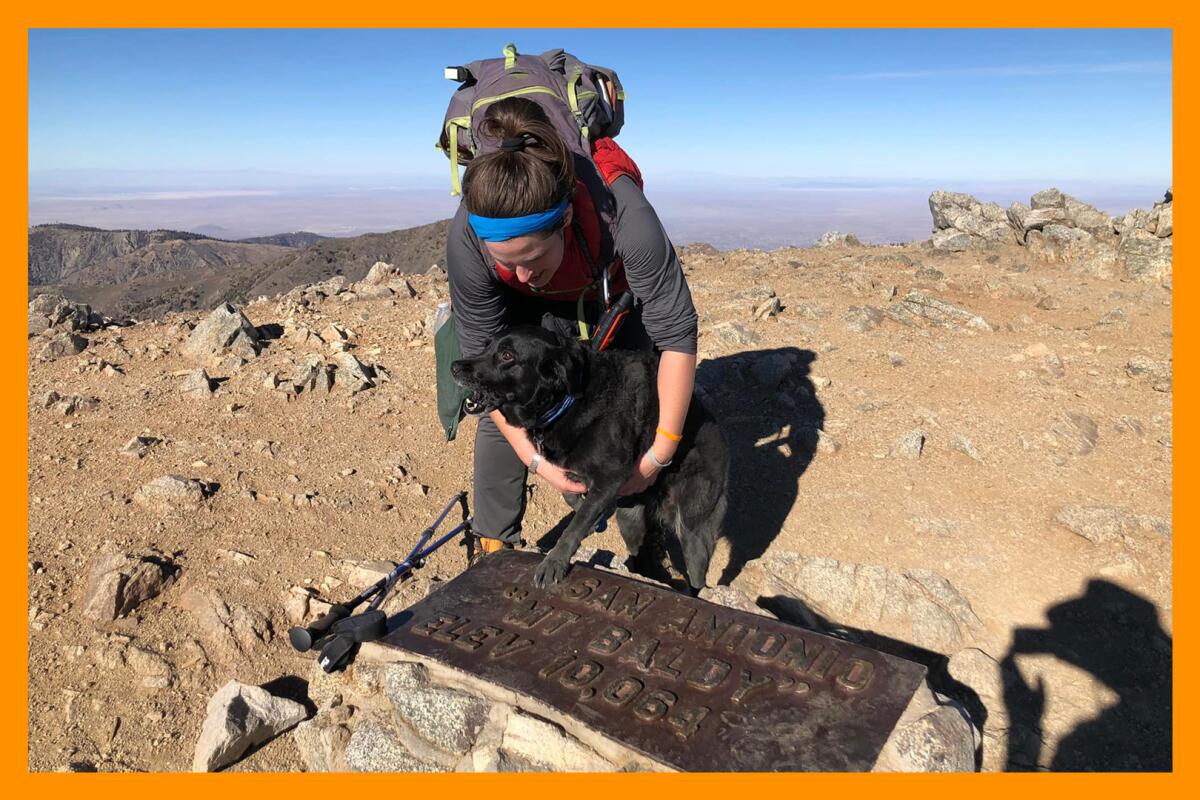
This week’s guest wilder helps canine companion Maggie May touch the plaque atop Mt. Baldy, officially marking the end of the hike to the summit.
(Photo from Jaclyn Cosgrove)
During a recent rescue mission on Cucamonga Peak near Mt. Baldy, rescuers couldn’t initially see a hiker in need — even though a fellow hiker had used his Garmin inReach that told rescuers where to come — until that hiker used his bright orange beanie to signal them.
Krebs points to the three types of signaling: electronic signals, like a satellite communicator; ground to air signals, like signal mirrors or lights (even your cellphone camera can help); and pyrotechnic signals, which are admittedly tricky in Southern California, where lighting a fire can create a worse disaster than being lost.
Krebs teaches the other four basic needs, via a series of clever rhymes to help students remember.
No. 2 / Take care of you. Your second basic need is personal protection, Krebs said, explaining that, in a survival scenario, you have to ensure you can stay thermally regulated, whether that’s not getting too hot or too cold.
If you’re getting too hot and you have plenty of water, you can take your shirt or hat off, and soak those. If you’re hiking with your canine companion, you can cup water in your hand and soak their fur. In a cold scenario, if you bring a rain jacket that’s a size up from what you need, you can create an insulated puffy jacket by stuffing it with items from your pack or organic material — like dry leaves — and it will keep you warmer until rescue arrives.
Overall, you need to make sure you have the right clothing, equipment and means to make a shelter and a fire in case you end up having to stay overnight on a hike, waiting for rescue.
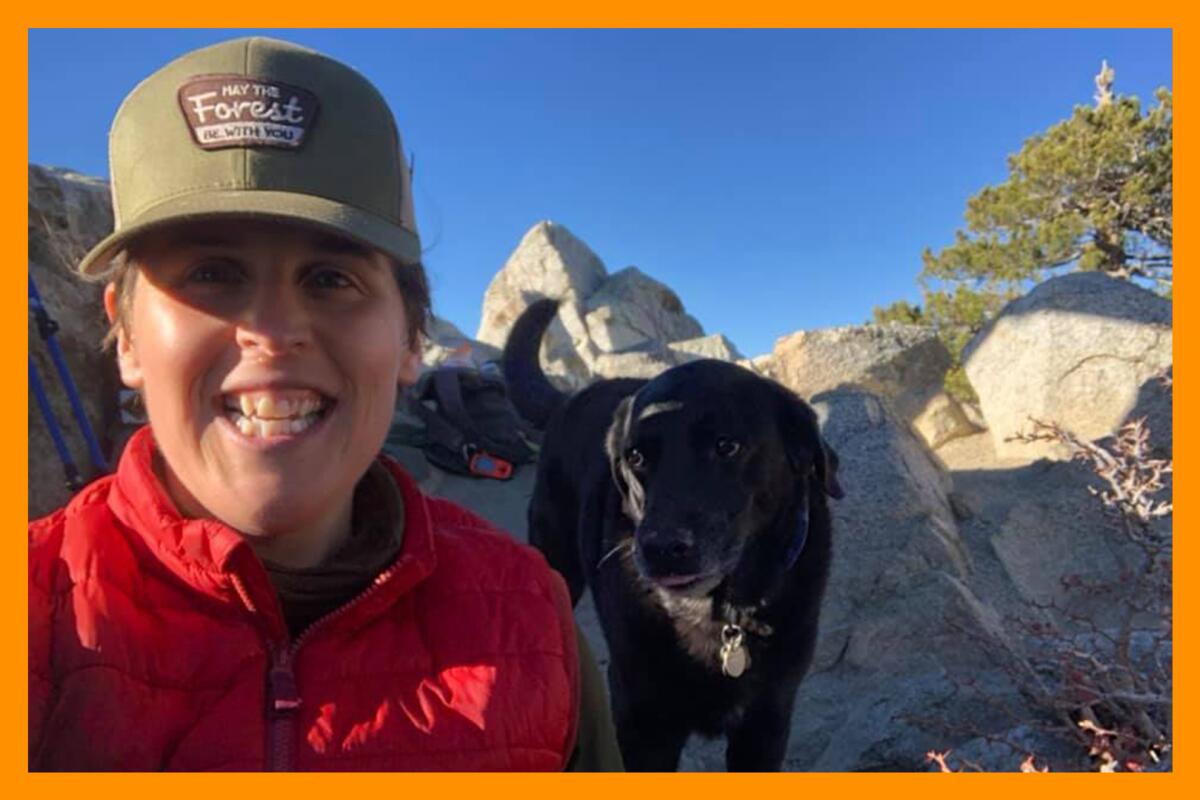
Once, as an unprepared hiker, the author had to use Maggie May’s leash as a knee brace after overextending a hamstring.
(Photo from Jaclyn Cosgrove)
No. 3 / Go pee. This is a reminder to drink water. In a survival scenario, food is less important, Krebs said, unless a person has diabetes or another medical condition that requires food. Otherwise, humans can go at least 30 days without food. For a survival scenario, “if you’re not going pee, drink some water,” Krebs said. “If you don’t have water, go find it. If you don’t have any way to disinfect it, drink it anyway.” (But don’t drink your own pee.)
No. 4 / Explore. Have what you need to navigate the terrain, such as a paper map and compass, and also know what risks you might face in your environment, like snakes, landslides, avalanches and weather. Plan ahead for those.
No. 5 / Stay alive. This relates to everything you need to maintain your health, especially your mental and emotional health. It’s knowing how to calm yourself down so you don’t waste energy panicking. It’s making sure you can maintain your hygiene if stuck outside longer than you planned.
“Go through that list,” Krebs said. “What do I have for signaling? What do I have for everything (needed for) personal protection — clothing, equipment, shelter and fire? What do I have for water? Am I taking some kind of water container? How much water is going to be out there? What do I have for backup, for disinfection? For No. 4, what do I have for all my navigational needs? What do I need in this particular environment? And five, what are the essential medications that if I don’t make it back tonight, I should have with me? And do I need a first aid kit, and if so, what do I need in it, based on the terrain, conditions and people going out?”
Even though Krebs’ five-basic-needs list might sound daunting at first, I find it extremely helpful and comforting. Based on that advice, what I bring with me to hike Griffith Park versus Mt. Baldy will be pretty different. When I’m hiking in the Icehouse Canyon area, near Mt. Baldy, I always bring my rain jacket because I know it is almost always windy at Icehouse Canyon Saddle where several trailheads meet and it’s fairly exposed to wind. To hike Griffith Park, instead of that jacket, I usually just pack my emergency blanket because it’s lightweight and multipurpose, (serving as a shade, a blanket to lie down on if hurt and as a signaling device since it’s big and orange).
Lastly, I’d like to address a type of safety that’s important not to overlook — your safety as it relates to who you are.
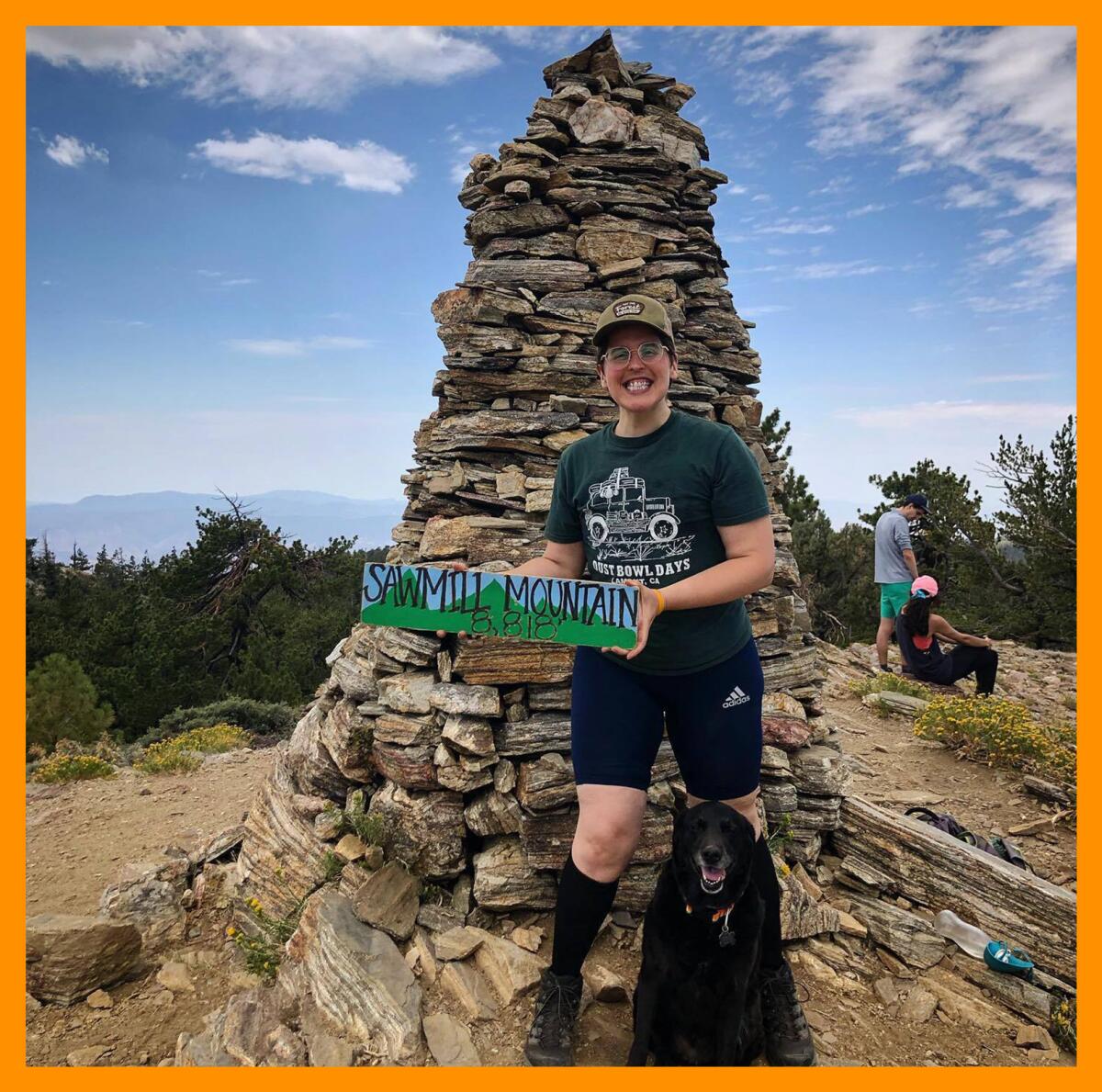
Even though they’re all smiles at the summit of Sawmill Mountain, Cosgrove says that as a nonbinary hiker “there are times when I feel anxious about going out on the trail.”
(Photo from Jaclyn Cosgrove)
As a nonbinary hiker, there are times when I feel anxious about going out on the trail. What if I run into someone who hates trans people, and they say something? What if I’m hiking shirtless, and someone notices I’ve had top surgery and reacts? Luckily, I’ve never had any issues — but it’s still on my mind.
In recent years, more attention has been paid in the outdoors community to the experiences of hikers of color, who come to the trails with their own anxieties.
Kriste Peoples, executive director of Women’s Wilderness, said as a Black woman, she hadn’t felt a real sense of belonging in the outdoors until she co-founded Trailblazers, a BIPOC women’s and nonbinary group within Women’s Wilderness.
Peoples got into hiking and trail running because she didn’t feel seen or embraced in Boulder, Colo., where she lived at the time.
“And so, I was like, ‘The mountains aren’t judging me, the mountains don’t care what I have relative to gear and prowess. The mountains are welcoming me, just as I am,’” Peoples told The Times. “And that’s how I got into it.”
Through running Trailblazers, she has heard from other women and nonbinary people of color who shared their experiences hiking and how they hadn’t felt welcome or seen in other spaces.
It can be dangerous for a person of color hiking with a group when they’re the only person of color, and they don’t feel seen or heard, or they’re experiencing microaggressions that go unaddressed, Peoples said.
“Because if I feel like I have to be on guard because I’m the only one, and I wasn’t sure about this anyway, I’m more prone to not pay as close attention, or to not feel as engaged with the group, I might fall back a bit, I might expose myself to more risks than I would because I don’t feel safe in the group,” Peoples said. “I might not tell people if I’m under-resourced, if I don’t have enough water, because then ‘Oh, then they’re going to judge me.’”
I hope this newsletter empowers you to prepare for your next hike, feeling confident you’ve considered how to best protect yourself and those with you, whether they be canine or human.
3 things to do

Pedestrians walk on the 110 Freeway as part of the first ArroyoFest 20 years ago in Pasadena. The event returns to a 7-mile stretch of the Arroyo Seco on Oct. 29.
(Joe Cavaretta / Associated Press)
1. Go where no man has gone before, kinda. On Oct. 29, you can walk, bike, skip, hop, jump or do anything else you want on a stretch of car-free roadway for the first time in 20 years. 626 Golden Streets ArroyoFest will shut down seven miles of the Arroyo Seco Parkway portion of the 110 Freeway from 7 to 11 a.m. The southbound lanes will be reserved for pedestrians, including walkers, runners and wheelchair users, while the northbound lanes will be for using wheeled devices, like bikes and skateboards. The event is free, but you’re encouraged to bring a few bucks to support local businesses along the way. 626goldenstreets.com

A past-its-prime jack-o’-lantern melting into a compost pile at a previous LA Compost Annual Pumpkin Smash. This year the event will occur over three days and in three different locations around the city beginning Nov. 3.
(LA Compost)
2. Smash your pumpkins. If your Halloween pumpkins survive the squirrels, you can dispose of them at LA Compost’s Annual Pumpkin Smash. The event runs Nov. 3, 4 and 5 and includes three locations where you’ll be provided tools to smash your pumpkins into compostable bits. Additional information and a link to register at lacompost.org.

“The Iridescence of Knowledge” exhibition will be on display at Oxy Arts through Nov. 18.
(Gina Clyne / Oxy Arts)
3. Reflect, dialogue and celebrate. “The Iridescence of Knowing’’ invites visitors to Oxy Arts in Eagle Rock to learn about the rich lineage of Indigenous cultural production in Tovaangar, known today as the greater Los Angeles basin. In the exhibition, you’ll see works from many First Peoples communities of Southern California. Runs through Nov. 18. More information at oxyarts.oxy.edu.
The must-read
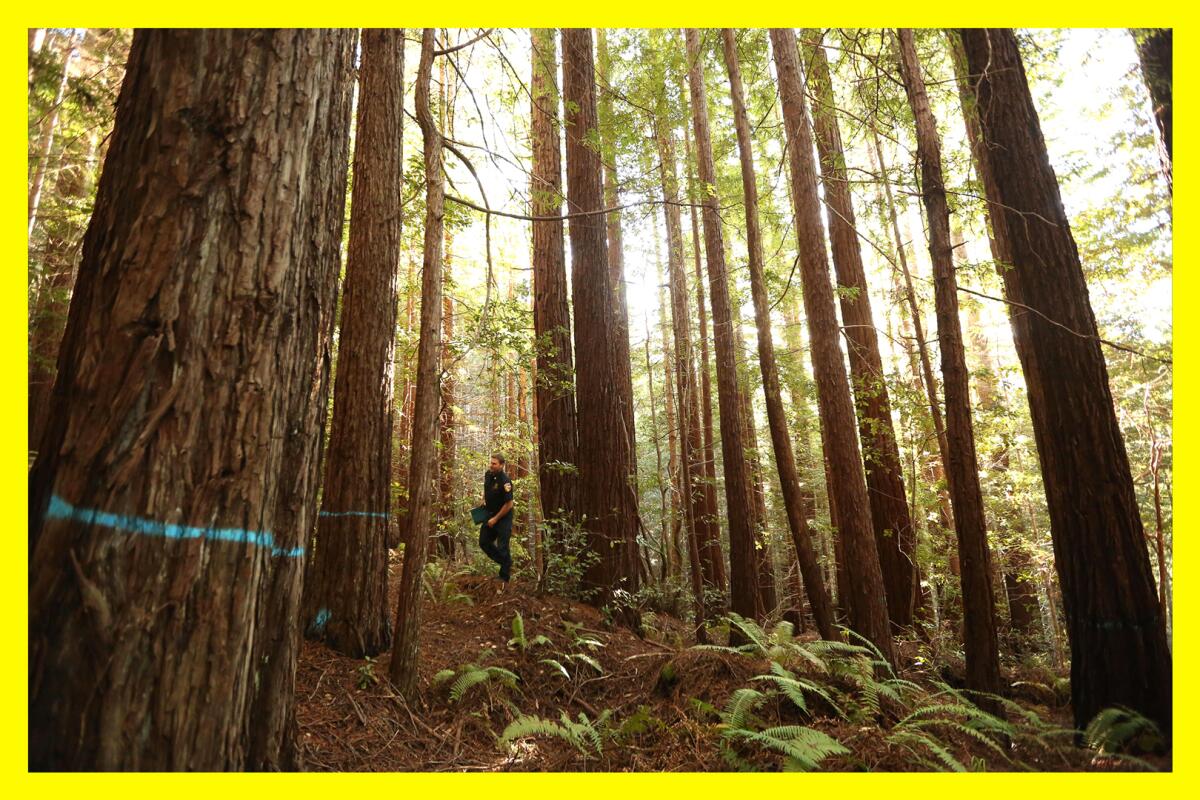
What is it like in a 24th century world where forests like this towering grove of redwoods have been erased from history? Listen to BBC 4’s “Forest 404” and find out.
(Genaro Molina / Los Angeles Times)
My must-read is actually a must-listen. I am an aspiring podcast aficionado, listening to any sci-fi or dystopian podcast I can get my ears on.
One of my favorite recent listens was “Forest 404,” a BBC Radio 4 sci-fi thriller set in a 24th century world where forests have been erased from history. Regardless of whether you listen to the entire podcast, I highly recommend you take time to listen to episode T9, titled “Love Letter to the Forest,” a poem of sorts by writer David Haskell.
“We breathe each other, every inhale brings life’s catalyst, oxygen, half of this precious gas is made deep inside your emerald leaves, the other half of the oxygen in my breath, comes from your comrades, the ocean algae.”
In practicing gratitude for the forest, may it lead us all to want to protect it even more.
Stay safe out there,

P.S.

Want to volunteer your time like these folks to help make L.A. a greener, cleaner place? Outdoor opportunities abound at the TreePeople website.
(Adam Corey Thomas)
If you’re looking for an interesting way to spend time outdoors while volunteering, check out nonprofit TreePeople’s calendar, where you can sign up to help restore habitats harmed by wildfire or plant trees to help cool down neighborhoods. treepeople.org
For more insider tips on Southern California’s beaches, trails and parks, check out past editions of The Wild. And to view this newsletter in your browser, click here.


